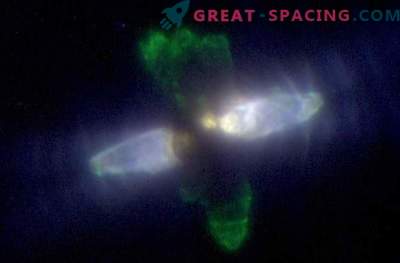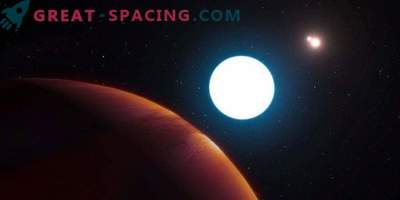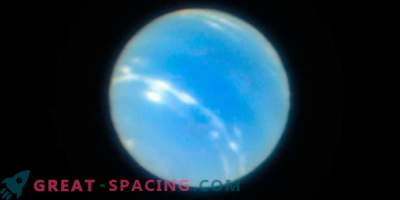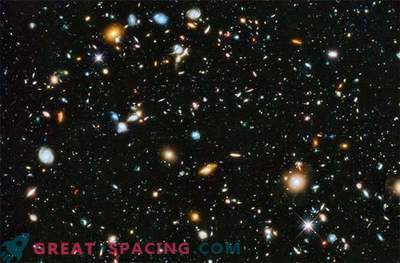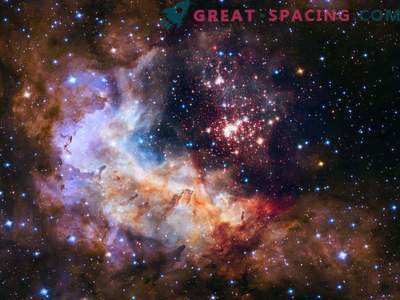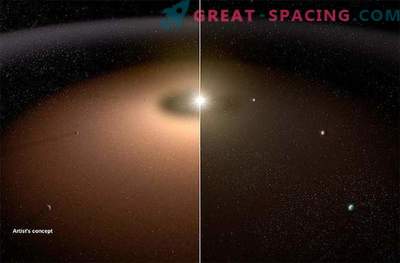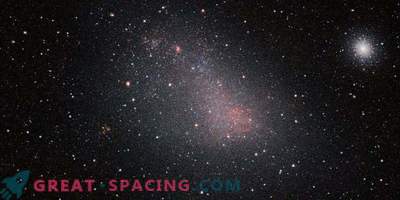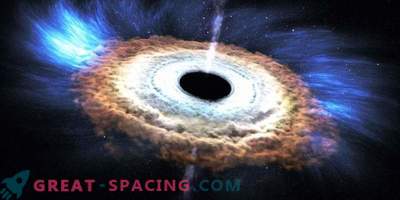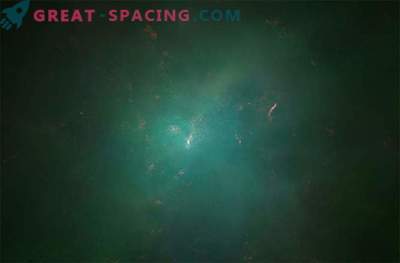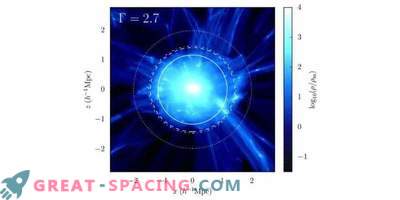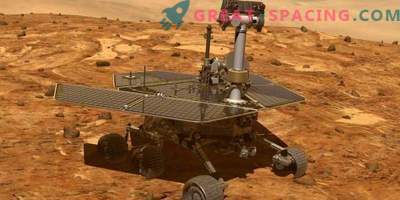March 13, 2013, 20 years have passed since the day the Keck Observatory began to observe space. Located in one of the most extreme and beautiful places on the planet (on top of Mauna Kea, Hawaii, 13 803 feet (4207 m) above sea level), the Keck twin domes explore everything from asteroids, planets and exoplanets, to distant galaxies and nebulae.
In order to celebrate two decades of incredible achievements, the portal V-kosmose.com collected for you some of the most impressive images that the Keck Observatory received.

The Keck I and Keck II telescopes depicted in this photo blinded the sky with their adaptive laser optical system, which helps to nullify the turbulence of the Earth’s atmosphere, thanks to which astronomers get the clearest space images taken with the ground telescope.

Starting space exploration close to home, Keck II made this infrared image of the asteroid 2005 YU55 as he flew past the Earth on November 8, 2011.
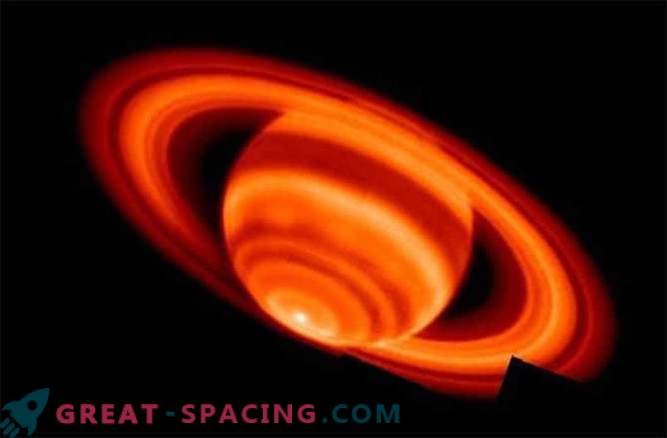
This is a mosaic image of the heat radiation of Saturn and its rings, made on February 4, 2004 by the Keck I telescope at a wavelength of 17.65 microns.
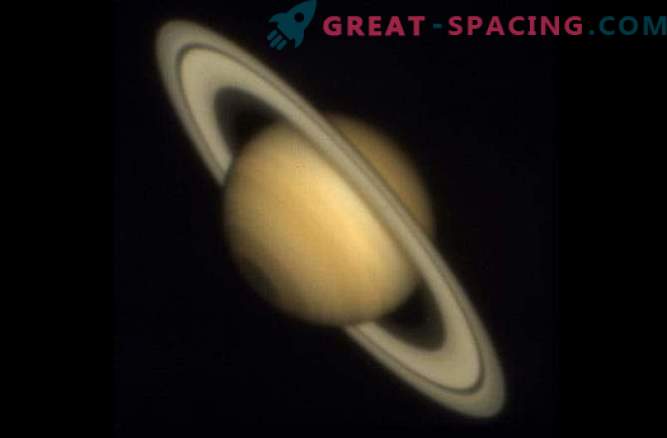
Good image of Saturn captured by Keck I infrared infrared camera (NIRC), November 1, 1998.
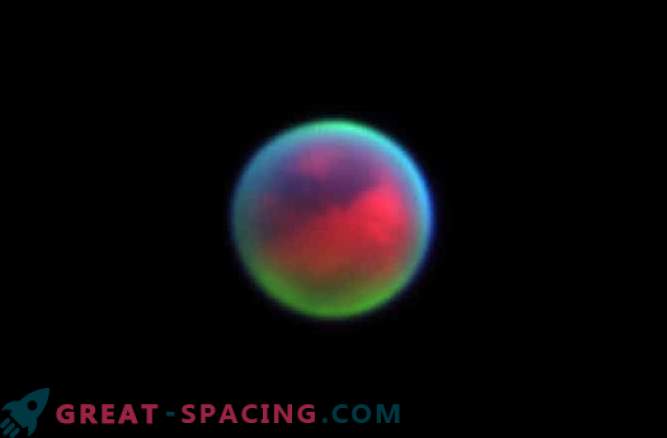
Another multi-colored look at Titan. This image was obtained using the system of adaptive optics of the Keck II telescope. The surface of Titan looks red, while the layers of clouds at higher heights in the atmosphere are green and blue.
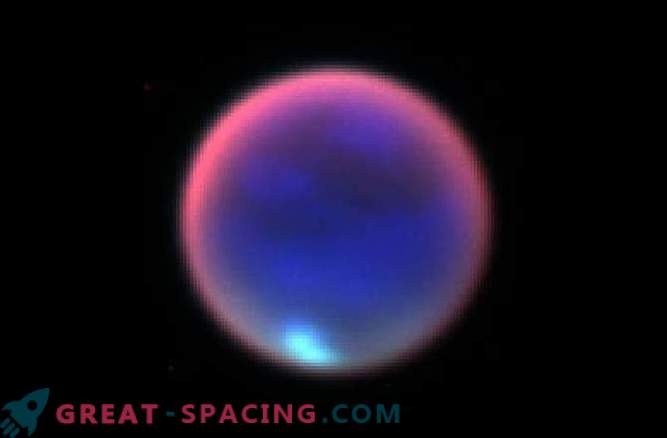
This is Saturn’s giant satellite, Titan. This image was obtained by overlaying three infrared filters. It was accepted by astronomer Antonin Bush on June 7, 2011.

Continuing to explore the solar system, Keck’s near-infrared camera NIRC2 took this fancy photo of Uranus from July 11-12, 2004.

This image of Neptune and its largest satellite, Triton, was made by astronomer Mike Brown in September 2011. Turbulent clouds can be seen in the image, the speed of which can exceed 1200 miles per hour.
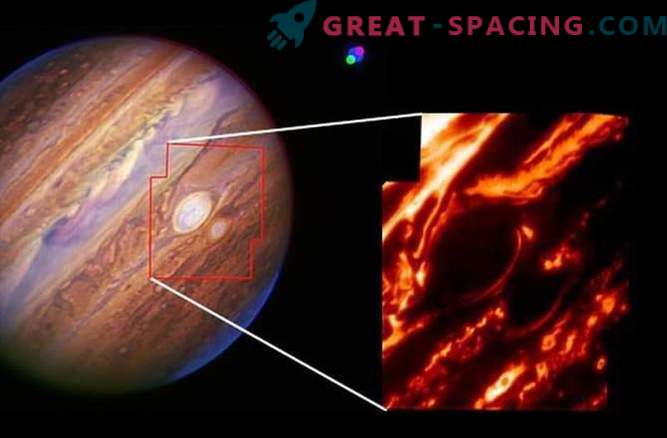
Color combined image of Jupiter and its satellite Io in the near infrared region of the spectrum. A callout on the right shows close-ups of two red spots through a special filter that allows you to peer deeper into the clouds.

HR 8799: Three exoplanets orbiting a young star located 140 light-years away. This image was obtained using the near-infrared region of the Keck Observatory's adaptive optics. It was the first direct observation of worlds revolving around another star, using a ground observatory.
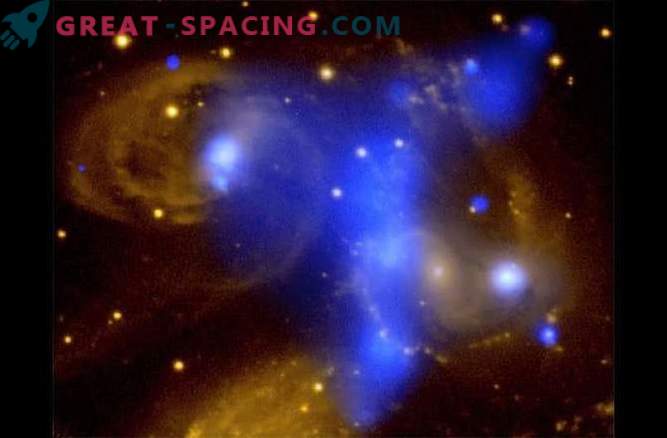
Now to the extremes - the image of Stefan Quintet, a small compact group of galaxies. The most vivid photos taken by the Keck Observatory: Start
